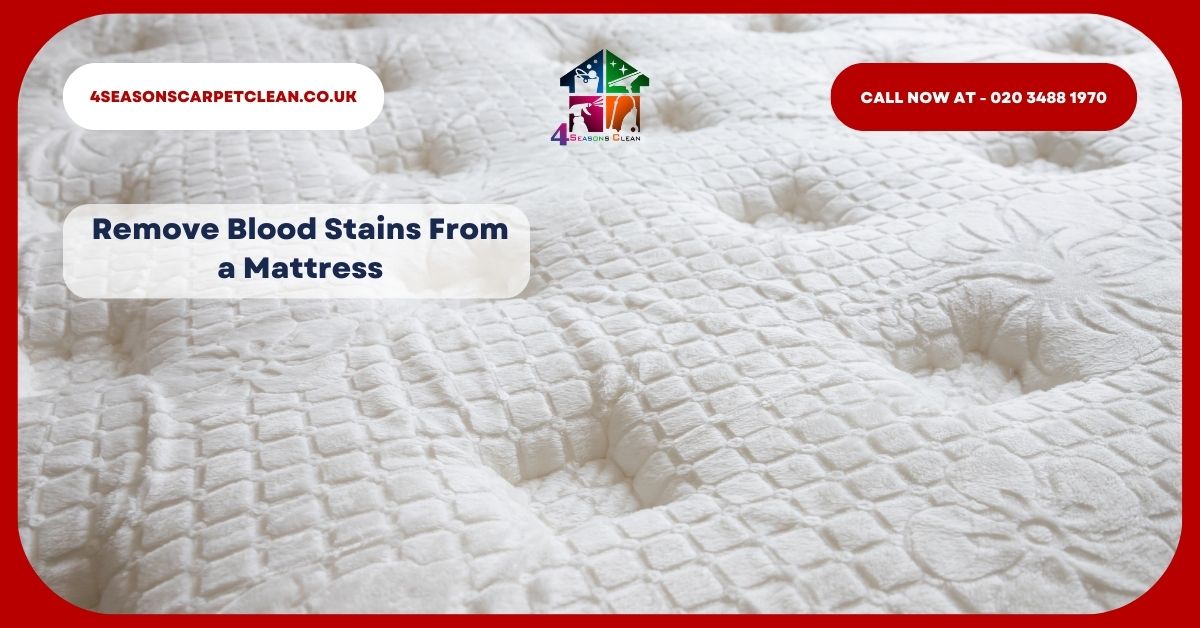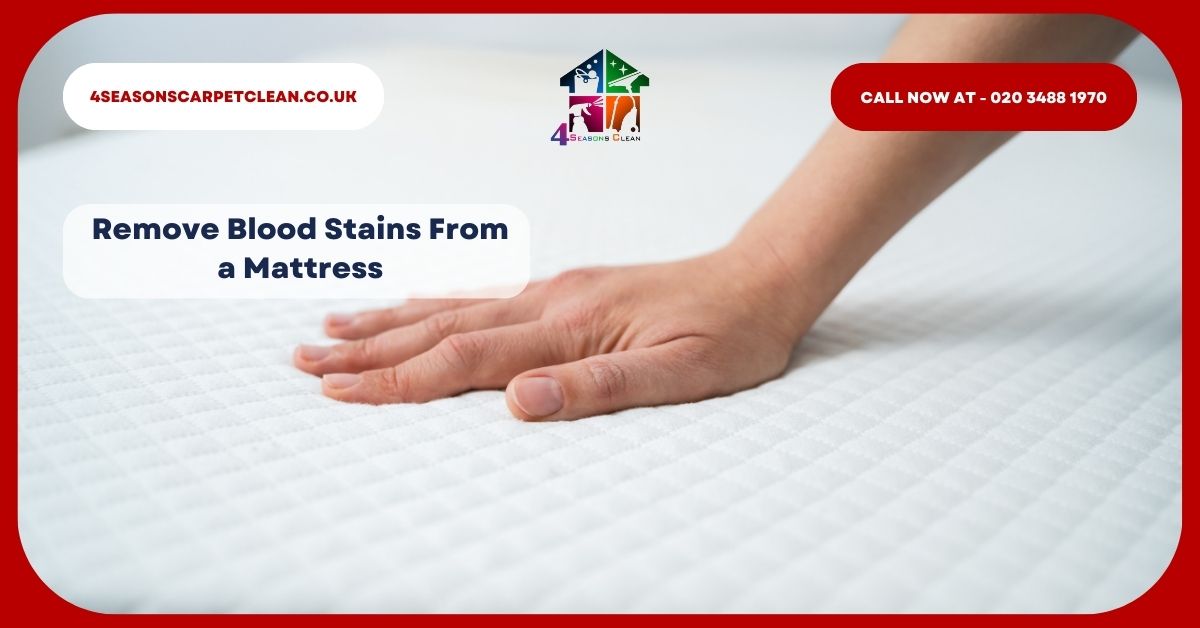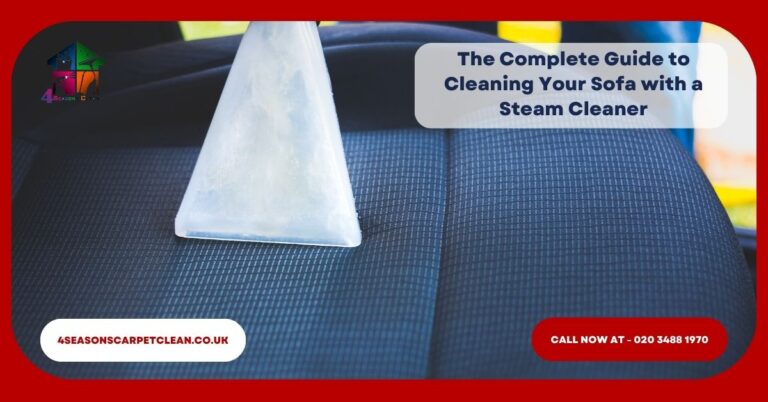Blood stains on a mattress can be a real headache. They’re unsightly, stubborn, and can seem impossible to remove. But don’t worry, we’ve got you covered.
In this comprehensive guide, we’ll explore 10 surprising solutions to the question: “How do I remove blood stains from a mattress?” We’ll delve into practical, easy-to-follow methods that you can try at home. These methods utilize common household items, making them cost-effective and convenient.
Blood stains, like any other stains, should be treated as quickly as possible. The longer they sit, the harder they become to remove. So, quick action is key. We’ll discuss this and more in the coming sections.
We’ll also look at the science behind blood stains. Understanding why blood stains are so stubborn can help you tackle them more effectively. We will explain why cold water works better than hot water for removing blood stains. We will also discuss why a gentle blotting motion is better than rubbing.
This guide is not just about removing blood stains. It’s also about maintaining the cleanliness and longevity of your mattress. We’ll share tips on regular mattress maintenance, and how to prevent future stains.
Our target audience includes anyone dealing with blood stains on their mattresses. Parents, pet owners, or anyone who has experienced an accident leading to blood stains will find this guide useful. Cleaning enthusiasts looking for mattress cleaning hacks will also find valuable insights here.
We will talk about different solutions. These include common household items like hydrogen peroxide and baking soda. We will also cover some unusual options, like meat tenderizer. We’ll also cover natural disinfectants like white vinegar, and even old-fashioned remedies like milk.

We’ll provide step-by-step guides for each method, along with safety precautions to keep in mind. We’ll also discuss the importance of testing a small, inconspicuous area of the mattress before applying any cleaner.
In addition to removing blood stains, we’ll also cover how to remove odors and light stains from mattresses. We will talk about why it is important to rinse well with cold water after using any cleaning solution. We will also cover how to dry the mattress afterward.
We’ll also touch on the importance of avoiding too much water or cleaner to prevent mold and mildew growth. And we’ll share tips on how to use a stiff brush to remove dried blood from the mattress surface.
Patience is key in this process. Some stains may require multiple treatments for complete removal. But with persistence and the right techniques, you can restore your mattress to its former glory.
We’ll also discuss the importance of having a stain removal kit handy for quick response to any future accidents. And we’ll share tips on how to educate family members on how to treat blood stains, to ensure quick action when needed.
Finally, we’ll discuss when it might be time to call in professional cleaners for persistent or large blood stains. We’ll provide guidance on what to expect from professional cleaning, and how to maintain your mattress afterwards.
So, are you ready to tackle those stubborn blood stains? Let’s dive in and explore these 10 surprising solutions. By the end of this guide, you’ll be well-equipped to answer the question: “How do I remove blood stains from a mattress?”
Understanding Blood Stains
Removing blood stains can be daunting if we don’t understand their nature. Blood, a biological substance, behaves differently from food or drink stains. Knowing its properties can aid effective removal.
Blood stains comprise proteins, which make them particularly tenacious. When exposed to heat, these proteins coagulate, setting the stain permanently. That’s why immediate action is crucial.
The color of blood stains can shift from bright red to dark brown over time. This change is due to oxidation, which complicates removal. Addressing stains when they’re fresh is always best.
Stains become more embedded in fabric over time, especially mattresses. Mattresses, being porous, allow blood to penetrate deeply. Quick and effective stain treatment prevents this from happening.

Every stain has a context—consider size, age, and fabric type. Such factors influence the cleaning method you choose. A strategic approach is key to successful removal.
The Science Behind Blood Stains
Blood carries iron-rich compounds that contribute to its deep hue. These compounds bond with fabric fibers, creating stubborn stains. Applying principles of chemistry can help break these bonds.
Understanding hemoglobin, the iron-containing protein in blood, is vital. Hemoglobin is responsible for oxygen transport and its strong attachment to fabric fibers. This bond requires targeted treatments to disrupt it effectively.
Enzymatic cleaners are specifically designed to target proteins like hemoglobin. Enzymes catalyze reactions, breaking down proteins into smaller molecules. This breakdown simplifies the removal process significantly.
Cold water serves as the first line of defense against blood stains. It prevents proteins from coagulating further, unlike hot water. Prompt use of cold water helps maintain the stain’s solvency for easier removal.
Fresh vs. Dried Blood Stains
Fresh blood stains are naturally easier to manage. Their moisture prevents full adherence to fabric fibers. Immediate treatment usually guarantees successful removal of fresh stains.
Dried stains, on the other hand, are more obstinate. They adhere firmly to fibers, requiring more rigorous treatment. Various products and repeated attempts are often necessary to eradicate them.
Drying blood leads to coagulation and particle embedding. Addressing dried stains involves rehydrating them. Gentle rehydration loosens particles for subsequent removal efforts.
Strategies differ for fresh versus dried stains. Fresh stains benefit from simpler solutions like cold water. Dried stains may require stronger agents like hydrogen peroxide or enzyme cleaners.
Our understanding of blood stains propels us in selecting appropriate cleaning methods. Strategy and science combine for successful stain removal, regardless of the challenge’s complexity.

Preparation Steps for Effective Cleaning
Effective blood stain removal hinges on preparation. Before diving in, gather your tools and supplies. Being prepared ensures efficiency and thoroughness in your cleaning process.
Consider your mattress type while preparing. Different fabrics require distinct cleaning methods. Understanding these needs will guide your choice of cleaning solutions.
Timing is crucial when tackling blood stains. The sooner you act, the better the outcome. Therefore, having your kit ready is a proactive approach.
Consider the conditions in which you work. Ensure the area is well-ventilated to avoid inhaling any cleaning fumes. Good lighting helps you see and treat the stain fully.
Organize your cleaning kit and plan your approach. Follow an orderly process, from spot treatment to drying, to achieve the best results.
Gather Necessary Supplies
To effectively handle blood stains, gather essential supplies in advance. Having everything on hand simplifies the cleaning process and avoids unnecessary delays.
Equip yourself with basic household items for most cleaning attempts. A first-aid stain removal kit can include cold water, baking soda, salt, and vinegar. These items are effective for many fresh stains.
For tougher, dried stains, advanced supplies may be necessary. Hydrogen peroxide, enzyme cleaners, and rubbing alcohol offer stronger cleaning power. These are often essential when basic techniques fall short.
Assemble the following supplies for your cleaning kit:
- Cold water
- Clean white cloths or paper towels
- Baking soda
- Salt
- White vinegar
- Hydrogen peroxide
- Enzyme-based cleaner
- Rubbing alcohol
- Spray bottle
- Protective gloves
Having these supplies on hand prepares you for various stain scenarios. Keep them in an accessible location so you can respond quickly to any future spills.
Safety Precautions
While removing blood stains, safety cannot be overstated. It is important to protect yourself from potential health risks. Always wear protective gloves when handling blood or using cleaning chemicals.
Ensure proper ventilation to minimize the risk of inhaling fumes. Open windows or use fans to circulate fresh air. This step is vital when working with strong cleaning agents like hydrogen peroxide.
Testing cleaning solutions on an inconspicuous mattress area is wise. This action prevents unintended damage to the mattress fabric. Each mattress material responds differently to cleaning agents.
Avoid mixing cleaning agents, particularly ammonia with bleach. Such combinations can produce hazardous gases. Always follow the usage instructions for each cleaner to ensure safe application.
Be mindful of disposal practices for cleaning materials used on blood stains. Proper disposal safeguards both personal health and environmental well-being. Compliance with local waste disposal regulations is essential.
Taking these precautions not only ensures a safe cleaning experience but also protects your mattress from unnecessary harm. Prioritize safety at each step of the cleaning process to achieve optimal results.
How to Get Rid of Blood Stains: Fresh Stains
Acting quickly with fresh blood stains is crucial. The sooner you start treatment, the easier it is to remove the stain. Fresh stains are more responsive to basic solutions, so speed is your ally.
When dealing with fresh stains, avoid using hot water. Heat can set the stain, making it more difficult to remove. Instead, rely on cold water-based methods for the best results.
Opt for gentle but effective methods to preserve your mattress’s integrity. Use soft, blotting motions instead of aggressive scrubbing. This approach prevents spreading the stain and damaging the mattress fibers.
Household items often offer great solutions for fresh stains. Cold water, baking soda, and salt can be highly effective. These items are not only accessible but also safe for most mattress types.
The following techniques provide various options for dealing with fresh blood stains:
Cold Water Method
One of the simplest methods for fresh blood stains is using cold water. Cold water helps prevent the blood proteins from bonding with the mattress fibers. This method is effective due to its simplicity and accessibility.
Start by blotting the stain with a clean, white cloth soaked in cold water. Gently pat the stain without rubbing to prevent spreading. Rinse the cloth regularly to avoid reapplying blood onto the mattress.
Repeat the process until the stain fades. You may need to repeat several times for full effectiveness. Patience is key as it may take multiple attempts to fully clear the stain.
Here’s a quick guide to using the cold water method:
- Fill a bowl with cold water.
- Wet a clean cloth in the water.
- Blot the blood stain gently without rubbing.
- Continue until the stain is no longer visible.
- Dry the area thoroughly with a clean towel.
This simple yet effective method is often enough for minor and fresh stains. Plus, it requires no special products, making it a quick response solution.
Baking Soda Paste
Baking soda is a versatile cleaning agent. It’s known for tackling both stains and odors. Using it as a paste helps lift fresh blood stains effectively.
To create the paste, mix one part baking soda with two parts water. This mixture should have the consistency of toothpaste. Apply the paste directly onto the stain for optimal results.
Allow the paste to sit on the stain for at least 30 minutes. During this time, the baking soda will absorb moisture and break down stain particles. Once set, gently wipe away the paste with a clean cloth.
Follow these steps to use a baking soda paste:
- Mix baking soda with water to form a paste.
- Apply the paste to the stain, covering it well.
- Let it sit for 30 minutes or until dry.
- Wipe off the paste with a damp cloth.
- Pat dry the area with a towel.
Baking soda not only removes stains but also neutralizes odors. This method is ideal for those looking for a natural, chemical-free cleaning option.
Salt and Water Solution
Salt, another common household item, is excellent for lifting fresh blood stains. It acts as a natural abrasive and absorbent, making it a dual-purpose cleaner.
Begin by mixing a half cup of salt with one cup of cold water. Stir until the salt dissolves completely. This creates a saline solution ideal for fresh stain treatment.
Apply the salt solution directly onto the stain using a clean cloth. Gently blot the area, ensuring you cover all the stained spots. Allow the solution to sit on the stain for 10–15 minutes.
Here’s a step-by-step guide for the salt and water method:
- Dissolve half a cup of salt in one cup of cold water.
- Soak a clean cloth in the salt solution.
- Blot the blood stain gently with the damp cloth.
- Let the solution sit on the stain for 10 minutes.
- Rinse the area with cold water and dry with a towel.
The salt method is efficient and uses items you likely have at home. It’s a quick and natural way to handle unexpected blood stains, preserving both your mattress and peace of mind.
How to Clean Mattress Stains: Dried Stains
Dried blood stains are more challenging, as they have already set into the mattress fibers. However, they are not impossible to remove. With the right techniques, it’s possible to diminish these stubborn stains effectively.
Success with dried stains often comes down to using strong yet safe cleaning agents. These agents are specially formulated to break down proteins in the blood. They work best by allowing them to sit and penetrate deeply.
When tackling dried stains, be prepared for multiple applications. Persistence is crucial because old stains require more effort to lift. Focus on patience and consistency for the best outcomes.
Ensure that you always test cleaning methods on a small area first. This precautionary step helps prevent discoloration or damage. It’s especially important for mattresses that are not colorfast.
Explore the following three effective methods to address dried blood stains:
Hydrogen Peroxide Treatment
Hydrogen peroxide is a popular choice for blood stain removal. It’s an oxidizer that breaks down blood protein bonds. This chemical action makes it particularly effective on stubborn stains.
To start, lightly dampen a cloth with hydrogen peroxide. Apply it directly onto the stained area, allowing it to bubble and lift the stain. Be cautious: hydrogen peroxide might bleach the fabric.
Give the solution about 5-10 minutes to work. Then gently dab the area with a clean, damp cloth to blot the stain away. Remember to rinse thoroughly with cold water to remove any residue.
Here’s a summary for using hydrogen peroxide:
- Pour a small amount of hydrogen peroxide on a clean cloth.
- Dab the stain and let it bubble for 5 minutes.
- Blot with a damp cloth to lift the stain.
- Rinse the area with cold water and dry with a towel.
This method is powerful but should be used with care. Ensure your mattress can withstand the bleaching effect to prevent unintended damage.
Enzyme-Based Stain Remover
For those seeking an option specifically designed for proteins, enzyme-based cleaners are ideal. These cleaners target the proteins in blood, breaking them down effectively.
Before using, shake the enzyme cleaner bottle well. Spray a sufficient amount onto the dried blood stain, ensuring full coverage. Allow it to sit, typically for 15-30 minutes, which allows enzymes to work deeply.
After enough time has passed, blot the area with a clean, damp cloth. This removes the cleaner and lifts the stain remnants from the mattress. Again, ensure thorough rinsing to prevent residue buildup.
Here’s an easy guide to using enzyme-based cleaners:
- Shake the enzyme cleaner and spray it onto the stain.
- Let it sit for about 15-30 minutes.
- Blot the area with a damp cloth to remove cleaner and stains.
- Rinse well with cold water and dry thoroughly.
This approach offers a purpose-driven solution, especially for organic stains like blood. Enzyme cleaners are widely praised for their targeted effectiveness.
Vinegar and Dish Soap Mixture
The combination of vinegar and dish soap offers a potent cleaning solution. Vinegar acts as a mild disinfectant, while dish soap helps to lift and emulsify the stain particles.
Begin by mixing one cup of vinegar with two tablespoons of dish soap in a bowl. Dip a clean cloth into this mixture and dab it onto the stain. Allow the solution to saturate the stain for about 15 minutes.
After soaking, gently scrub the area with a soft brush. This helps dislodge dried blood particles. Finish by wiping down with a damp cloth to remove soap residue, then rinse thoroughly with water.
To prepare and use this mixture efficiently:
- Mix one cup of vinegar with two tablespoons of dish soap.
- Apply the mixture to the stain with a clean cloth.
- Let it sit for 15 minutes, then gently scrub.
- Rinse off with a damp cloth, followed by water.
This vinegar-soap combo is both natural and efficient. It’s a great choice for those who prefer household items over commercial products.
Mattress Cleaning Hacks to Try
Exploring unconventional techniques can offer surprising solutions for removing blood stains from a mattress. These methods often utilize everyday household items you might not associate with cleaning. They can provide an effective alternative when traditional approaches fall short. The key is to experiment and find what works best for your specific situation. Be sure to always test these hacks on a small area first to avoid unintended damage.
These innovative cleaning hacks also incorporate natural or eco-friendly ingredients. This approach supports a healthier home environment while achieving remarkable results. Plus, they often save both money and time by using items readily available at home.
Meat Tenderizer Method
The idea of using meat tenderizer for stain removal might seem odd. However, it’s surprisingly effective due to its enzyme content, which breaks down proteins. Blood is primarily protein, making this an apt solution for stubborn stains.
To use, create a paste by combining one tablespoon of meat tenderizer with two teaspoons of water. Spread this paste onto the dried blood stain and let it sit for 30 minutes. This allows the enzymes to penetrate and work their magic.
Once the time is up, gently blot the area with a damp cloth. This action helps to lift the stain and remove the meat tenderizer residue. Ensure you rinse the area thoroughly with cold water afterward.
Here’s how you can apply the meat tenderizer method:
- Mix 1 tablespoon of meat tenderizer with 2 teaspoons of water to form a paste.
- Spread the paste over the blood stain and let it sit for 30 minutes.
- Blot with a damp cloth, then rinse with cold water.
This method offers an inventive way to combat protein-based stains using an item from your spice rack.
Cornstarch and Hydrogen Peroxide
Combining cornstarch and hydrogen peroxide creates an effective stain remover. Cornstarch aids in drying and lifting stains, while hydrogen peroxide helps break them down. This mixture is easy to make and apply.
To prepare, mix two tablespoons of cornstarch with one tablespoon of hydrogen peroxide. Then, add a teaspoon of salt to the mixture. This forms a thick paste. Apply the paste to the stained area using a soft cloth, ensuring full coverage.
Allow the paste to dry completely, preferably in sunlight, as it enhances the whitening effect. Once dry, remove the dried paste using a soft brush or vacuum, and inspect the mattress for any remaining stains.
For this method, follow these simple steps:
- Mix 2 tablespoons of cornstarch, 1 tablespoon of hydrogen peroxide, and a teaspoon of salt into a paste.
- Apply to the stain and let it dry in the sun.
- Brush or vacuum off the dried paste thoroughly.
The cornstarch and peroxide blend offers a dual-action solution, working both as a scrub and a bleaching agent.
Rubbing Alcohol Application
Rubbing alcohol is a versatile cleaning agent, often used for stain removal. Its quick-drying properties make it ideal for mattresses, helping avoid excess moisture build-up. This method works particularly well for recent stains.
Start by pouring a small amount of rubbing alcohol onto a clean cloth. Dab the stained area gently, avoiding any rubbing that could spread the stain. The alcohol acts swiftly, breaking down blood residues without soaking the mattress.
After applying the rubbing alcohol, allow it to air dry. You can also use a fan to speed up the process. Once dry, any remaining stain residue can be gently scrubbed with a soft brush.
Here’s a quick guide on using rubbing alcohol:
- Pour rubbing alcohol onto a clean cloth.
- Dab the blood stain gently without rubbing.
- Let it air dry, then lightly scrub away any residue.
The use of rubbing alcohol is a quick and easy hack, offering effective results with minimal moisture.
Preventive Measures for Future Stains
Preventing blood stains on a mattress is often easier than removing them. By taking proactive steps, you can reduce the likelihood of future stains and maintain the cleanliness of your bed. Investing a little effort into prevention pays off in maintaining your mattress’s longevity and hygiene.
Understanding why blood stains occur can help you adopt the right strategies. Accidents, menstruation, or pets can lead to these annoying spots. Once these are identified, implementing preventive measures becomes more straightforward.
Some preventive actions are as simple as upgrading your bedding accessories and adopting regular cleaning routines. These approaches not only keep stains at bay but also help maintain a fresh and healthy sleep environment.
Protective Mattress Covers
One of the most effective preventive measures is using a mattress cover. These covers act as a barrier, shielding your mattress from potential spills and stains, including blood. Opt for waterproof or water-resistant versions for maximum protection.
Mattress covers are available in various materials, including cotton, polyester, and a combination of both. Select one that offers breathability and comfort while protecting against liquids. Look for features such as hypoallergenic properties if allergies are a concern.
Installing a mattress cover is straightforward. Choose a fitted design that fully encases your mattress, including the sides. Secure the cover snugly, ensuring no areas are exposed. By doing so, you safeguard your mattress from unwanted spills or accidents.
With a protective cover, cleaning becomes effortless since the liquid doesn’t penetrate the mattress. Simply remove and wash the cover, keeping your bed hygienic and fresh. Mattress covers are available at various price points, offering a budget-friendly option for prolonged mattress life.
Regular Maintenance Tips
Regular upkeep not only enhances mattress longevity but also plays a key role in preventing permanent stains. Simple maintenance routines can make all the difference, maintaining a clean and inviting sleep environment.
Develop a habit of inspecting your mattress regularly for any signs of dirt or early stains. Addressing these promptly can save you from tougher cleaning tasks later. Rotating and flipping your mattress every few months helps ensure even wear.
To support these efforts, consider the following maintenance checklist:
- Vacuum Regularly: Use a vacuum cleaner with an upholstery attachment to suck up dust and debris.
- Spot Clean: Address any fresh stains immediately using appropriate cleaning methods.
- Sun Exposure: Allow your mattress some time in the sun to naturally eliminate odors and moisture.
- Air Out: Remove sheets and covers occasionally to let your mattress breathe.
- Use Mattress Toppers: Consider adding a topper for extra comfort and an added layer of protection.
By including these tips in your routine, you reduce the risk of stains and extend your mattress’s life span. Keep some basic cleaning supplies handy to address any minor incidents swiftly, reinforcing your preventive measures effectively.
Conclusion
Tackling blood stains on a mattress can seem daunting, but with the right techniques, it’s manageable. Acting quickly and knowing which method to apply helps you maintain a clean sleeping environment. Whether you face fresh stains or dried ones, numerous solutions are available to ease the process.
Remember, preventive measures are your first line of defense. Using mattress covers and conducting regular maintenance reduces the risk of future stains. By employing these strategies, you’re not just keeping your mattress clean but also extending its life. Armed with these insights, you can confidently manage any mattress mishap, ensuring a restful and hygienic night’s sleep.






